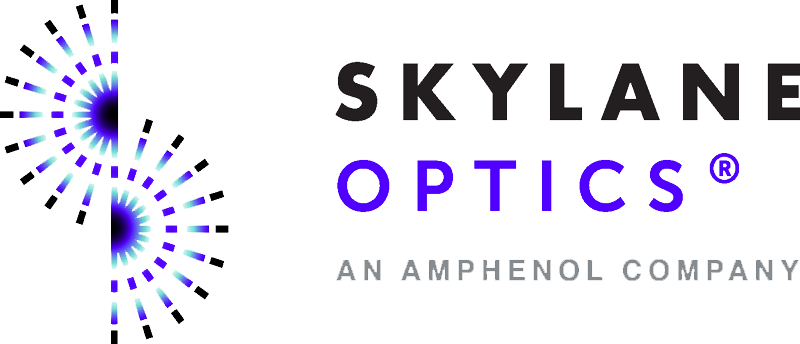New article | Synchronous Optical Networking (SONET) and Synchronous Digital Hierarchy (SDH)

Synchronous Optical Networking (SONET) and Synchronous Digital Hierarchy (SDH) are standard multiplexing protocols used to transfer multiple digital bit streams over optical networks.
This method was developed to replace the Plesiochronous Digital Hierarchy (PDH) system for transporting larger amounts of telephone calls and data traffic over the same fiber without synchronization problems.
SONET and SDH, were designed to transport circuit mode communications from a variety of different sources, to support real-time, uncompressed, circuit-switched voice encoded in PCM format. Prior to SONET/SDH this was not possible because the synchronization sources for these circuits were different. This meant that each circuit was actually operating at a slightly different rate and with different phase. SONET/SDH allowed for the simultaneous transport of many different circuits of differing origin within a single framing protocol.
Due to SONET/SDH’s essential protocol neutrality and transport-oriented features, SONET/SDH was the obvious choice for transporting the fixed length Asynchronous Transfer Mode (ATM) frames also known as cells. It quickly evolved mapping structures and concatenated payload containers to transport ATM connections. In other words, for ATM (and eventually other protocols such as Ethernet), the internal complex structure previously used to transport circuit-oriented connections was removed and replaced with a large and concatenated frame (such as STS-3c) into which ATM cells, IP packets, or Ethernet frames are placed.
SONET is a set of transport containers that allow for delivery of a variety of protocols, including traditional telephony, ATM, Ethernet, and TCP/IP traffic. SONET is not a separate communication protocol in itself. The basic unit of transmission over the SONET is STM-1 with a bandwidth of 155.52 Mb/s, also referred as STS-3.
In conventional packet-oriented data transmission systems a frame usually consists of a header and a payload. In synchronous optical networking, the packet structure is modified a bit. The header (termed as overhead) is transmitted with the payload in parts. The header and payload are both transmitted in pieces until the entire frame gets transmitted.
Various kinds of transmission units have different kinds of frame structures. For example, an STS-1 unit has 810 octets, whereas STM-1 unit has 2430 octets. The frame of STS-1 unit is transmitted as 3 octets of overhead followed by 87 octets of payload. This process is repeated 10 times to transmit the entire data. Similarly, for STM-1 unit one frame consists of 9 octets of overhead and 261 octets of payload.

As shown in the figure, the SDH frame consists of 9 header fields and 261 payload fields. Data is transmitted byte-by-byte and row-by-row. The section overhead (SOH) of a STM-1 signal is divided into three parts: the regenerator section overhead (RSOH) and the multiplex section overhead (MSOH) and the administrative unit pointer (AU Pointer). The overheads contain information from the transmission system itself, which is used for a wide range of management functions, such as monitoring transmission quality, detecting failures, managing alarms, data communication channels, service channels, etc.
The various segments of the overhead are described as following:-
- Section Overhead – Also known as RSOH, it contains all the details about the frame structure required by the terminal equipment.
- Line overhead – Also known as MSOH, it contains information about error corrections and Automatic Protection Switching messages.
- Administrative Unit – This points to the first byte in the virtual container of the payload.
SONET/SDH network management protocols
Network management systems are used to monitor and configure SDH and SONET equipment.
The system contains three parts:
- Network management software
- Transporting of management data from control center to various SDH/SONET equipment.
- Transporting of management data between SDH/ SONET Equipment using ‘dedicated embedded data communication channels’ (DCCs) within the section and line overhead.
The main functions of the network management system can be given as follows:
- Network and network-element provisioning – Network management systems help to configure individual network devices in order to allocate a certain bandwidth on a network.
- Firmware patches – Network management systems help to update the device software and patches on a network.
- Performance monitoring – The performance of all the devices is monitored, threats and risks are identified and defects and outages are resolved using network management systems in modern day networks.
Equipment
Regenerators – These are similar to repeaters in electrical communication. They are used in long distance transmission. These convert the optical signals into electrical signals and convert them back to optical pulses after amplification. Various optical amplifiers have also come in the market which do not need an electrical medium.
STS multiplexer and de-multiplexer – They provide the interface between electrical tributary network and the optical network.
Add drop multiplexer(ADM) – ADMs are used as an interface between high speed side and low speed side of a network. Traditionally low speed sides consist of some electrical and optical components which are multiplexed together to form high speed signals.
Digital cross connect system – They support numerous high-speed signals, and allow for cross-connection of DS1s, DS3s and even STS-3s/12c and so on, from any input to any output.
Network architectures
SONET/SDH have only 3 types of network architectures which not only allow for efficient bandwidth usage but also help in transmitting traffic when some part of the network has failed. Every SDH/SONET connection on the optical physical layer uses two optical fibers, regardless of the transmission speed.
Network Speeds
| SONET/SDH Designations and bandwidths | ||||
| SONET Optical Carrier Level | SONET Frame Format | SDH level and Frame Format | Payload bandwidth | Line Rate (Kbit/s) |
| OC-1 | STS-1 | STM-0 | 50,112 | 51,840 |
| OC-3 | STS-3 | STM-1 | 150,336 | 155,520 |
| OC-12 | STS-12 | STM-4 | 601,344 | 622,080 |
| OC-24 | STS-24 | – | 1,202,688 | 1,244,160 |
| OC-48 | STS-48 | STM-16 | 2,405,376 | 2,488,320 |
| OC-192 | STS-192 | STM-64 | 9,621,504 | 9,953,280 |
| OC-768 | STS-768 | STM-256 | 38,486,016 | 39,813,120 |
| OC-3072 | STS-3072 | STM-1024 | 153,944,064 | 159,252,480 |



